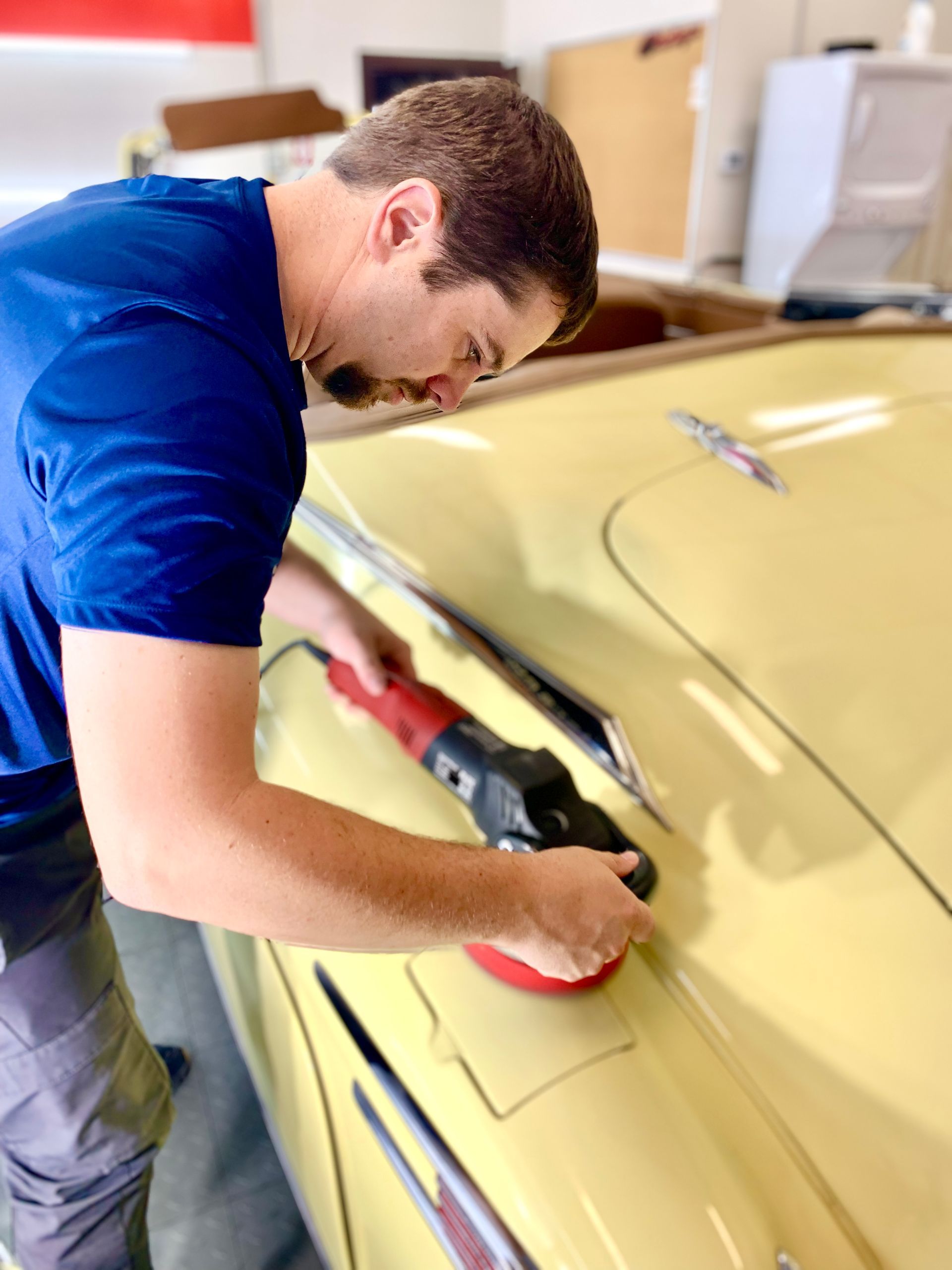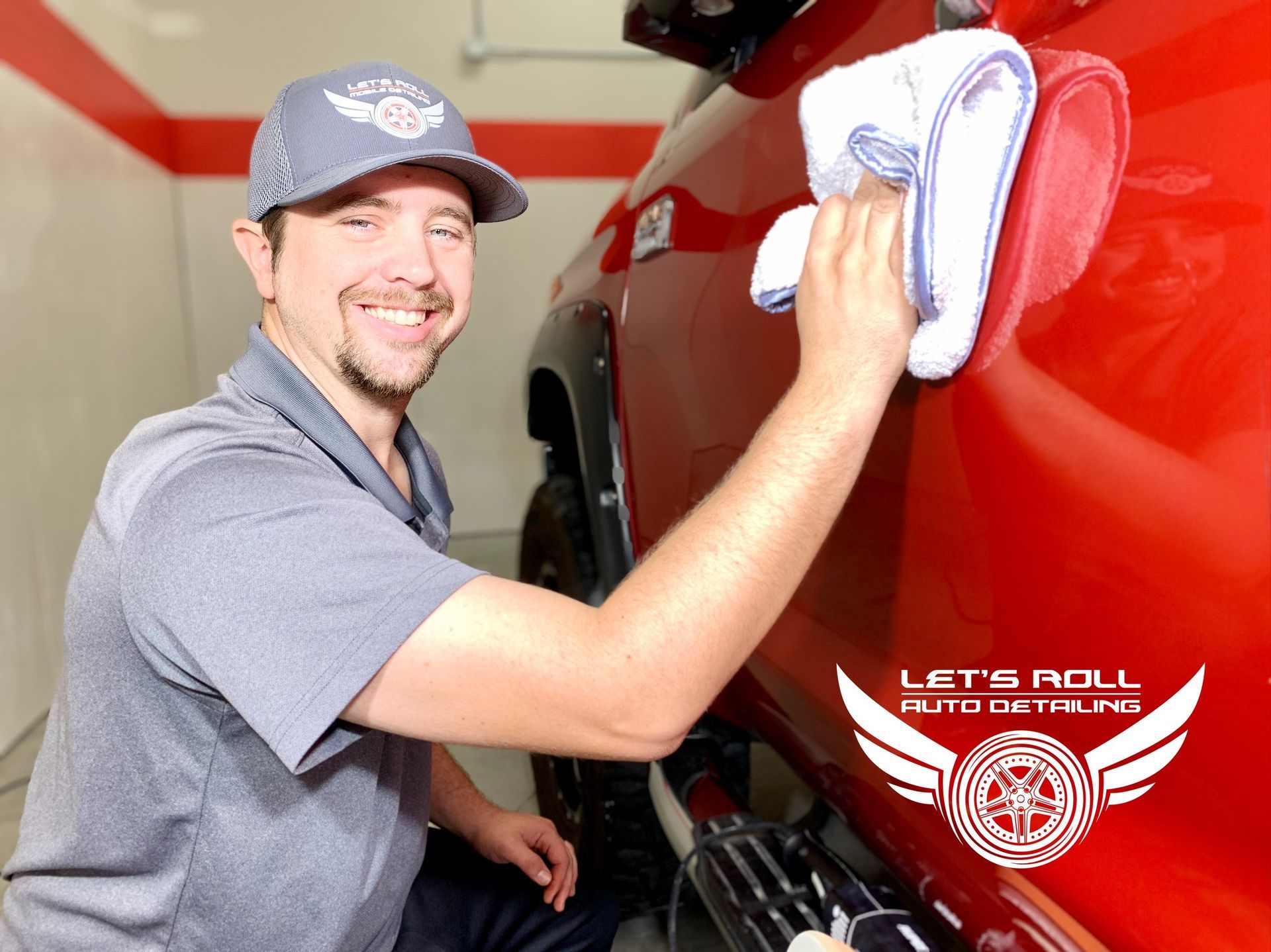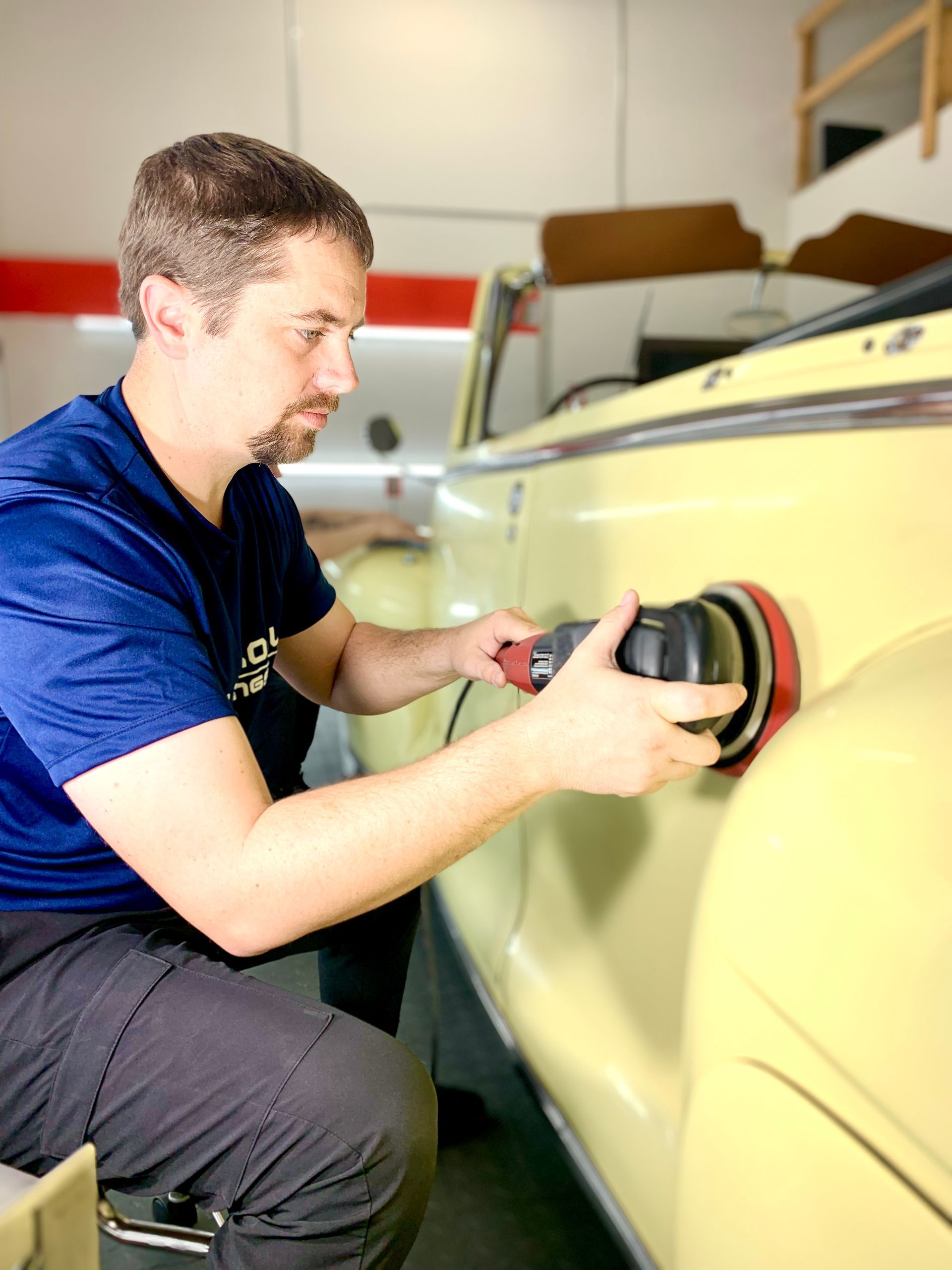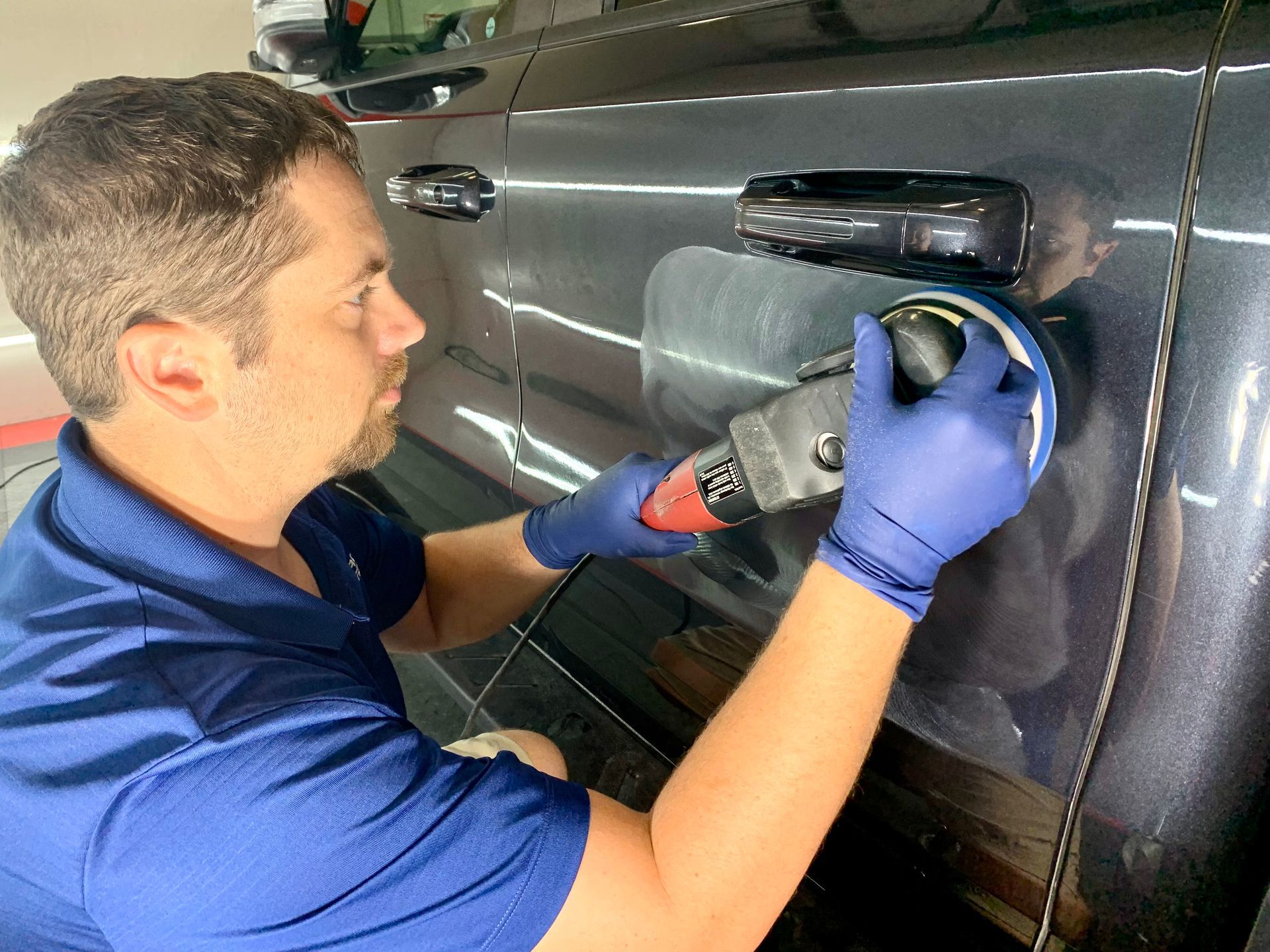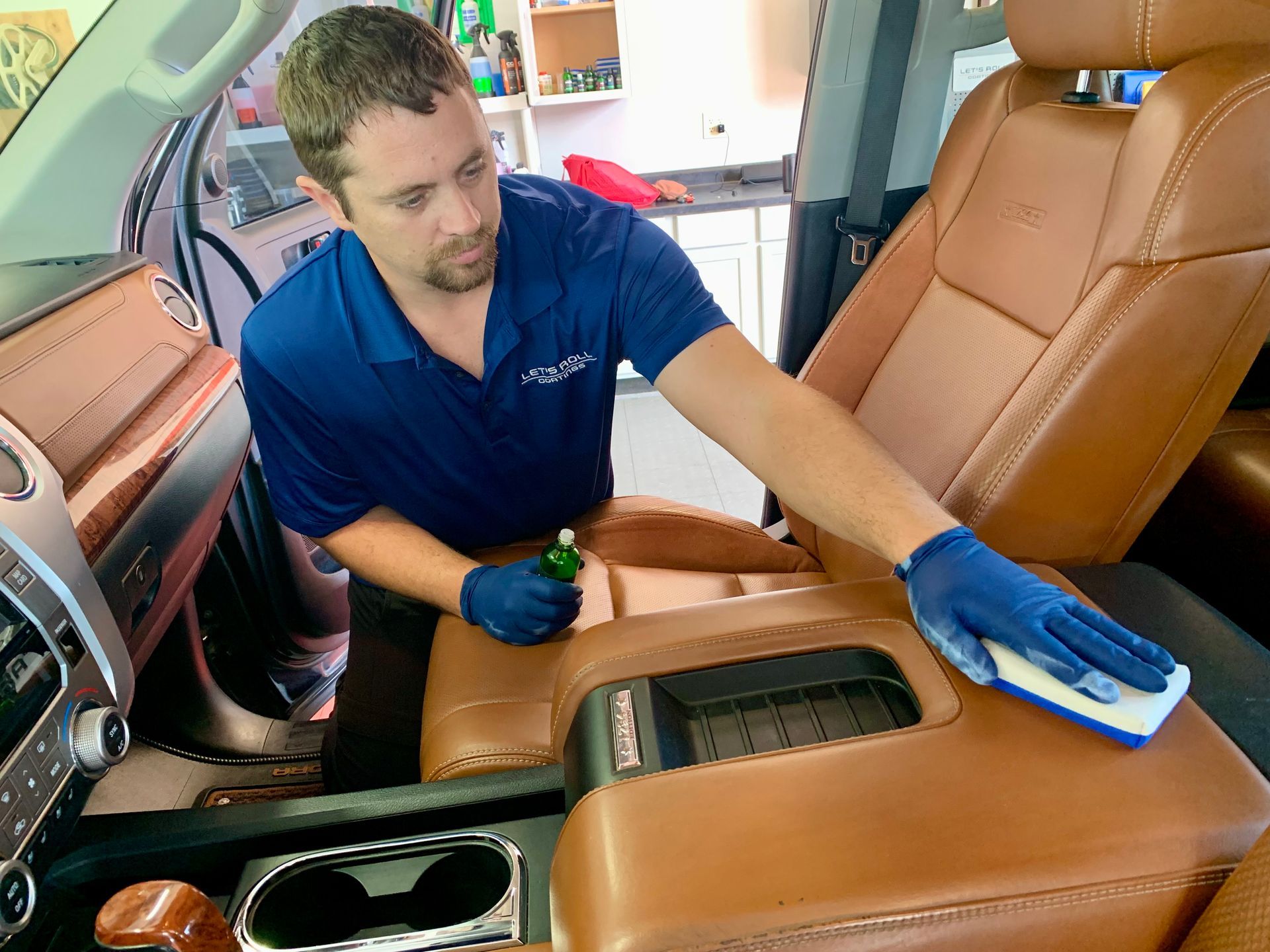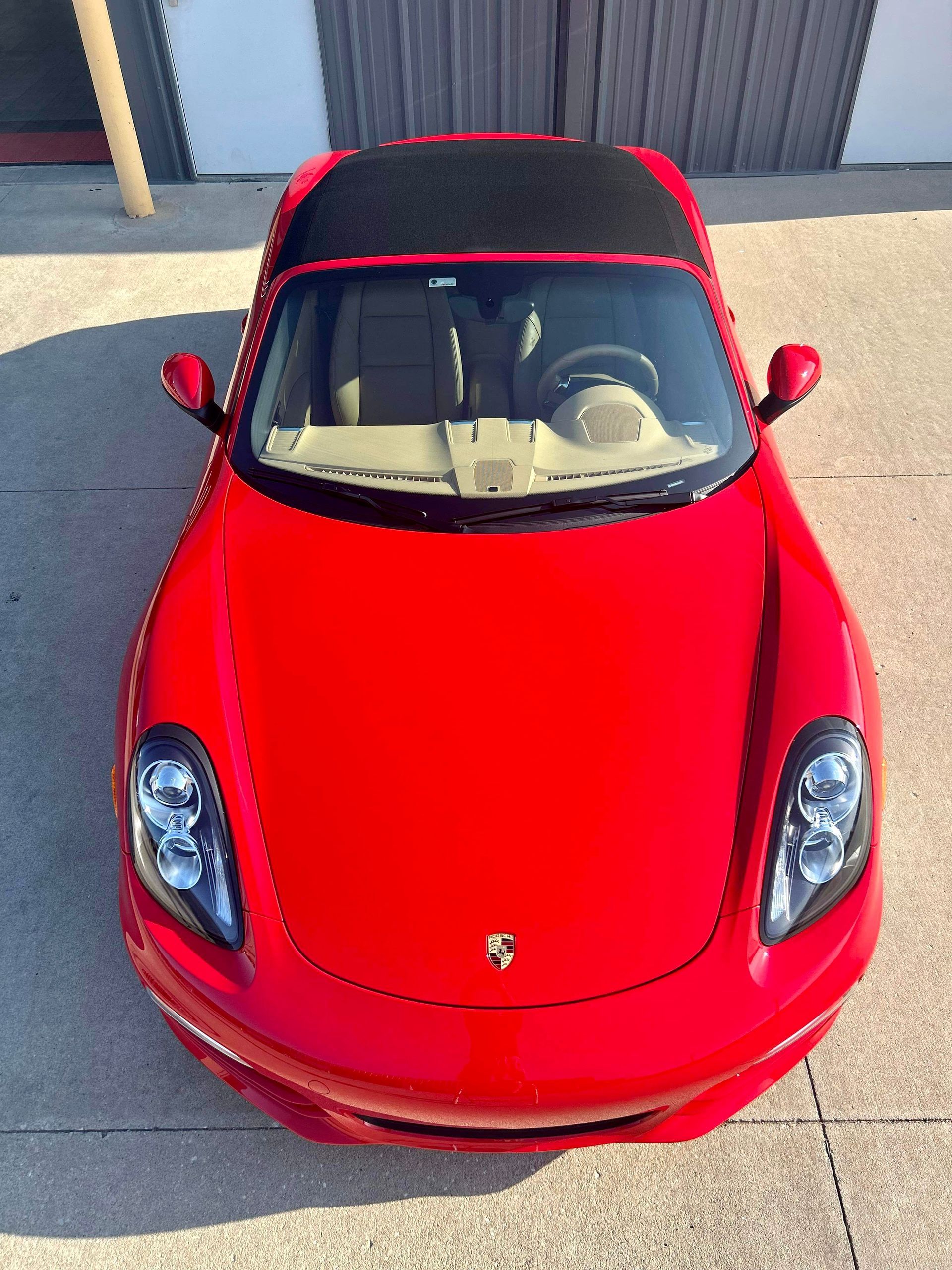Auto Paint Correction: What It Is and Why It's Important for Your Vehicle
When we think about our cars, we often focus on performance and reliability, but let's talk about something just as important: how they look. A vehicle's paint job is like its skin—subject to the harsh realities of sun, dirt, and road debris that can cause it to lose its shine over time. Have you ever noticed scratches, swirl marks, or faded colors on your car? If so, you're not alone! Many drivers face these common issues. Fortunately, there's a solution that can breathe new life into your ride—auto paint correction. This process is not just about making your car look good; it's about preserving its value and protecting your investment for the long haul.
Auto paint correction is the process of removing imperfections such as swirls, scratches, and oxidation from a vehicle's paint finish, utilizing techniques like machine polishing. This process is crucial for enhancing the aesthetic appeal of your vehicle, protecting its long-term value, and making it more attractive during resale or trade-in.
What Is Auto Paint Correction?
Auto paint correction is a meticulous restorative process designed to eliminate surface imperfections on your vehicle's paint finish. These imperfections include swirl marks, fine scratches, water spots, and oxidation—common issues that accumulate over time due to environmental exposure and regular wear and tear. Around 35% of vehicles older than three years show signs of these surface defects.
If you've ever parked your car under the sun only to later notice how the light reflects off tiny scratches and swirls, you understand the impact these flaws can have on the visual appeal of your vehicle. It’s as if a once-glistening finish has become dulled, and no amount of washing seems to restore its sheen. The frustration is palpable, especially when you’ve invested time and money in your car’s appearance.
The essence of paint correction lies in restoring that original beauty. Skilled professionals employ various techniques and materials, using tools such as dual-action polishers or rotary buffers to gently yet effectively remove these imperfections without harming the underlying paintwork. The process includes using abrasive compounds and polishing pads, which meticulously grind down the uneven surface to reveal a smoother layer beneath.
Additionally, investing in this service can significantly boost your car's resale value; potential buyers are often more attracted to vehicles that present well both in looks and condition. Having a pristine exterior enhances aesthetics and serves as a protective measure against further deterioration. Yet, it’s important to recognize that while paint correction offers immediate visual benefits, it also requires an ongoing commitment to maintenance in order to preserve that beautiful finish derived from the process.
Benefits of Paint Correction for Your Vehicle
Investing in paint correction can have a major impact on your vehicle’s appearance, maintenance, and resale value. While it may seem like a cosmetic upgrade, paint correction provides several long-term benefits that go beyond just aesthetics. By restoring your vehicle’s finish, you not only enhance its look but also protect it from environmental damage and make regular maintenance easier. Here’s why paint correction is worth considering for your car:
- Boosts Resale Value: A well-maintained paint job can increase the resale value of your vehicle. Cars with pristine exterior conditions are more appealing to buyers, which means you can potentially fetch a higher price when you decide to sell or trade in your vehicle.
- Protects Against Environmental Contaminants: Once paint correction is applied, your car’s surface becomes better equipped to resist damage from bird droppings, tree sap, acid rain, and other harmful elements. This added protection prevents oxidation and extends the life of your vehicle’s exterior.
- Reduces Watermarks and Easier Maintenance: After paint correction, surfaces become smoother, making them more resistant to watermarks. Drivers often notice that regular cleaning is easier, as dirt and grime don’t stick as easily to a freshly polished surface.
- Improves Visual Appeal and Longevity: Like a skincare treatment, paint correction removes imperfections and provides a protective layer, giving your car a fresh, vibrant look. With proper maintenance, this shine can be preserved, keeping your car looking its best for years to come.
- Prolongs the Life of Your Vehicle’s Finish: By protecting against environmental elements and maintaining a smooth, glossy surface, paint correction helps preserve your car’s appearance for longer. This means fewer repairs or repainting, saving you money in the long term.
Investing in paint correction not only enhances your car’s aesthetics but also provides critical protection for its exterior. With these benefits in mind, it’s clear that paint correction is a smart choice for anyone who wants to keep their vehicle looking new and increase its value over time.
Step-by-Step Paint Correction Process
Performing paint correction isn't just about making your car look pretty; it involves several critical steps to ensure flawless results.
- Initial Assessment: The first stage begins with a careful assessment of the vehicle's exterior. This initial inspection serves as a guide to identify imperfections like scratches, swirl marks, and oxidation. The assessment should involve examining all areas of the vehicle under bright lighting. Areas often overlooked can harbor small dings or hazing that aren't visible at first glance. This phase provides clarity on what needs attention and helps avoid missing spots later in the process. Once you have a clear picture of any damage, it's time to wash the vehicle, which leads us seamlessly to the next crucial step.
- Washing and Decontamination: To begin this process, wash your vehicle using a high-quality pH-neutral shampoo to avoid stripping any existing wax or sealants. This gentle approach ensures that dirt and grime are effectively removed without harming the paint further. After washing, it’s critical to decontaminate the paint surface using a clay bar or a chemical decontaminant. This step removes embedded contaminants like tree sap, industrial fallout, or other pollutants that may have lodged into the finish over time, leaving behind a smooth canvas ready for correction. With the car freshly cleaned and decontaminated, it’s time for an even more technical evaluation involving paint thickness.
- Paint Thickness Measurement: Here comes an essential yet often overlooked part: measuring paint thickness using a specialized gauge. Knowing the depth of your paint is crucial because it prevents overpolishing, which can lead to more harm than good. This measurement guides your choice of products and techniques needed during compounding and polishing. Always err on the side of caution—achieving that perfect finish shouldn’t come at the cost of damaging what's underneath! Once you’ve established how much paint you’re working with, you can move on to compounding—the heart of the correction process.
- Compounding: Using a machine polisher equipped with an appropriate cutting compound is where many see drastic improvements in their vehicle’s appearance. The idea here is straightforward: apply the compound through controlled movements across small sections of the surface. By starting with a less aggressive pad and compound combination, you minimize unnecessary paint removal while still addressing deeper imperfections effectively. It may take multiple passes to get those more stubborn scratches fully corrected before moving onto polishing. After compounding comes polishing; this is where your hard work really begins to shine.
- Polishing: Following up with a finer polish refines your vehicle’s surface even further. This stage focuses on enhancing gloss and clarity by removing any haze left from compounding. Like compounding, use a machine polisher for consistent results but adjust to finer pads suited specifically for polish application. The end result should be nothing short of mesmerizing—a reflective surface that feels as smooth as glass beneath your fingers. Finally, once you're satisfied with the polished look, don't forget one last important step before calling it a day.
- Final Inspection: A detailed final inspection constitutes perhaps one of the most critical phases in ensuring all defects have been adequately addressed. Use various lighting conditions to examine every angle; sometimes problems become apparent only under particular lights. Check for clarity and consistency across panels; if anything doesn’t meet expectations, don’t hesitate to do touch-ups again. Regular maintenance following this process will keep your vehicle looking its best long after the initial correction has been completed!
Essential Tools and Techniques
Having the right tools at your disposal is like having a trusty sidekick ready to assist you throughout the paint correction journey. One of the standout tools is the dual-action polisher. This machine combines both rotary and orbital movements, allowing for efficient cutting power without the harshness that typically damages paint finishes. Many professionals prefer DA polishers for this reason—they dramatically reduce the risk of burning or damaging your vehicle's paint. Some trusted brands in the market are highly regarded for their reliability and performance, effectively making them a go-to choice among detailers.
Equally important are the compounds and polishes you choose to work with. The debate over which product reigns supreme continues, but it emphasizes the necessity of experimenting with various options to determine what fits your specific requirements best. The right compound can mean the difference between a mediocre and an exceptional finish. Moreover, ensuring that you have high-quality microfiber towels and pads on hand is essential for applying these compounds and polishing products. It's tempting to cut costs by purchasing cheaper alternatives, but this can lead to unwanted consequences like lint residue or scratches on your vehicle's surface.
With the right combination of these tools and techniques in hand, you'll find yourself well-prepared to tackle auto paint correction confidently. Remember that every detail matters—from choosing the appropriate polish to ensuring your towels are scratch-free—each provides layers of protection for your vehicle's finish. Investing time and resources into this process secures your vehicle’s aesthetic appeal while protecting its long-term value.
Professional vs. DIY Paint Correction
When it comes to auto paint correction, you have a big decision to make: should you hire a professional or try the DIY approach? Each option has its own benefits and challenges, so it’s important to weigh your choices carefully. Here’s a breakdown of the advantages and considerations for both options:
- Hiring a Professional: Professionals bring specialized knowledge, advanced equipment, and high-grade materials to the table. Their expertise ensures that tough imperfections, like scratches, are expertly handled, leaving your vehicle with a flawless finish that also offers long-term protection. However, professional services can be pricey, typically ranging from $300 to $1,500, depending on factors like the vehicle’s size, condition, and the amount of work needed. Hiring a professional certified by organizations like the International Detailing Association ensures you're getting the highest quality of service and customer satisfaction. These experts have the training and experience necessary to deliver exceptional results, making them an excellent choice for those who want consistent and dependable outcomes.
- DIY Approach: A DIY approach can be tempting due to its lower cost—basic tools, such as polishes, pads, and machines, usually cost between $100 and $300. However, this method requires significant time (anywhere from 8 to 20 hours) and patience, especially for beginners who may lack the experience to achieve professional-level results. Many car enthusiasts enjoy the satisfaction of learning the ins and outs of paint correction while working on their own vehicle. The DIY route can be a fulfilling, educational experience, allowing you to take control of the process and develop a deeper understanding of vehicle detailing. However, there's a risk of making mistakes that could worsen the paint’s condition. Without proper guidance or experience, you might unintentionally damage the vehicle, making it essential to assess your skill level before committing to a DIY project.
Ultimately, the decision to go professional or DIY depends on your confidence, budget, and desired outcome. Whether you choose to enlist an expert or take on the challenge yourself, it’s important to maintain your vehicle’s exterior for long-lasting beauty and protection.
Maintaining Your Vehicle's Paint Finish
After going through the rigorous process of paint correction, it becomes vital to uphold the quality of that newly refurbished surface. Neglecting maintenance can undo the hard work put into achieving that polished appearance. Regular upkeep serves as an insurance policy for your vehicle’s aesthetic, protecting your investment and ensuring you enjoy driving a car that looks pristine.
- Regular Washing: Keeping your vehicle clean should be at the top of your maintenance list. It's advised to wash your car every two weeks using a pH-neutral shampoo and the two-bucket method. This technique minimizes swirl marks by keeping dirt separate from the wash mitt, reducing the chances of scratching the already corrected finish. By regularly removing dirt and debris, you prevent them from degrading that smooth surface you've worked hard to achieve. A consistently washed vehicle not only shines, but it also repels contaminants that could lead to long-term damage.
- Waxing and Sealants: To add an extra layer of protection against UV rays and oxidation, applying a quality wax or paint sealant every three months is critical. Reputable products are renowned for their durability and outstanding protective qualities. They help maintain that glossy finish while acting as a barrier against environmental contaminants. The application of these products isn't just about aesthetics; it's a proactive measure to prevent oxidation and fading. Think of it as giving your vehicle a refreshing coat of armor against the elements.
- Garage or Car Cover: Whenever possible, park your vehicle in a garage or shield it with a quality car cover. This simple action significantly reduces exposure to damaging factors such as direct sunlight, dust, rain, and tree sap—all of which degrade paint over time. Protecting your car can create longevity in its exterior appearance. Vehicles protected this way can have up to 60% fewer paint imperfections compared to those left exposed outdoors. This statistic underscores how vital proper storage methods are in extending the life of your vehicle's finish.
Investing time into these maintenance practices ensures that your vehicle not only retains its showroom shine but also holds its value over time. Embracing these actions will help you maintain that fresh look and protect your investment for years to come.
Unmatched Paint Perfection in Wichita, KS
Say goodbye to dull, scratched, or imperfect paint with the
professional paint correction services from Let's Roll Coatings in Wichita, KS. Our highly trained technicians utilize advanced tools and proven methods to remove imperfections like swirl marks, light scratches, and oxidation, leaving your vehicle’s surface looking flawless. Whether you’re preparing for a protective coating or simply want your car to stand out on the road, our paint correction services deliver results you can see and quality you can trust. Let’s bring back the shine your car deserves—schedule your service with us today! Call us at (316) 295-0787 to get started!
